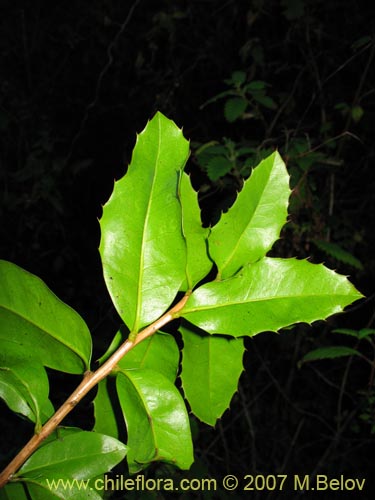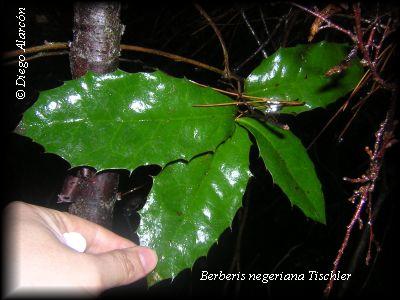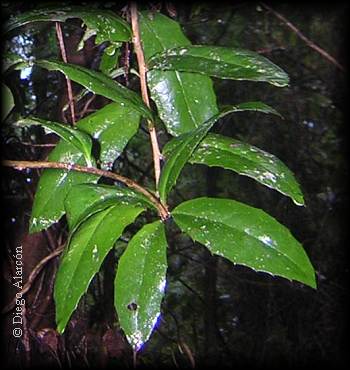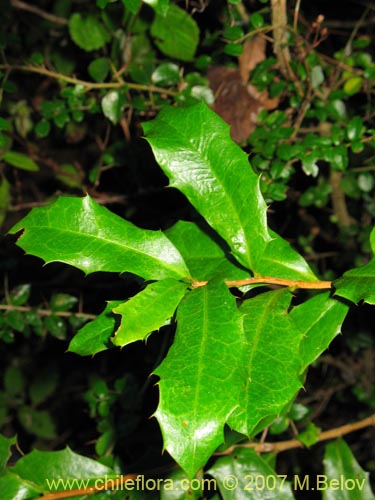Berberis negeriana
Berberis negeriana is a plant belonging to the family of the Barberry Family ( Berberidaceae ). She is from Chile. The species was described in 1902 by Georg Friedrich Leopold Joiners in Botanical yearbooks for systematics, plant history and geography of plants. The species name honors the finder of the plant, the German botanist Franz Wilhelm Negro ( 1868-1923 ).
Description
Berberis negeriana grows as a shrub that reaches only plant height of about one meter. The bark of young branches is light brown to gray and covered with fine papillae; with increasing age, the bark of the branches is gray, then has longitudinal cracks and edges. Thorns absent.
The leathery leaves are ovate -elliptic, 4.8 to 10 inches long and 1.3 to 4.2 inches wide. The leaf margin is coarsely toothed, rarely entire, with six to 16 thorn- pointed teeth, which can be long and 3 millimeters. The petiole is long and 3 millimeters.
The racemose inflorescence is a 2 to 8 inches long and is composed of up to twelve flowers. The flower stalks are 10 to 16 millimeters long. The yellow flowers have 14 bloom and are 5-8 millimeters long. The fruit is about 7 mm long and 4 mm wide, the stylus is about 3 millimeters long.
Berberis negeriana flowers in their home from September to November; it bears fruit from December to January.
Dissemination
This species is endemic, the Chilean city of Concepción is east known only from the area. It is the rarest and most endangered species Berberis in Chile. From single location in a southern beech forest only a few copies are known.










